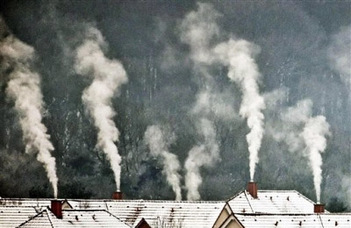
Health impacts of air pollution attributable to solid fuel burning
Sára Boglárka Balogh, III. year PhD-student
Doctoral School of Environmental Sciences - Environmental Chemistry Program
Supervisor: Dr. Tamás Szigeti, National Public Health Center
INTRODUCTION
A considerable number of households rely on solid fuels with little or no access to modern means of cooking and heating in rural settlements in Hungary. Residential solid fuel combustion has a major impact on air pollution, as it results in emission of significant amount of gas-phase and particle-phase pollutants, like particulates, such as PM10 and PM2,5 ; inorganic gaseous compounds, such as carbon monoxide (CO), sulphur dioxide (SO2 ), oxides of nitrogen (NOx); elemental/organic carbon (EC/OC); polycyclic aromatic hydrocarbons (PAHs) and volatile organic compounds (VOC) some of which can be carcinogenic (benzene, formaldehyde, 1,3-butadiene); and other organic compounds, such as levoglucosan (Simoneit, 2002; Clark et al.2013; Krugly et al., 2014). Exposure to these air pollutants is recognised as a major contributor to the global burden of disease. A number of epidemiological studies have found a positive association between exposure to outdoor and indoor solid fuel combustion and adverse health effects such as decreasing lung function, respiratory symptoms, asthma, and cardiovascular diseases (Kim et al., 2013; Smith et al., 2014). The project aim to (i) investigate the air quality in two rural settlements in Hungary; (ii) provide estimation for the contribution of solid fuel burning to the concentration air pollutants; (iii) determine the link between solid fuel burning and respiratory health; (iv) identify urinary biomarker for the investigation of exposure to air pollutants originating from solid fuel burning; (v) develop a strategy for air quality action plans. The research will provide new information on solid fuel burning in Hungary and a strategy for the improvement of air quality and human health will be developed.
METODS
Sampling site description
The sampling and measurement campaign took place at two sites in Hungary, on a rural and an urban location (Fig.1). The rural site is Nógrádmegyer village, which is situated in the northern part of Hungary. The main role in its selection was played by the fact that the use of solid fuel for heating purposes is significant in the settlement. The urban site is Esztergom, a school and port city in northern Hungary. On the settlement, the incorrect residential firing is negligible, residents typically heat with gas and district heating. The collection campaign was implemented at one outdoor point in each settlement during the two measurement campaigns (14-day). The first measurement campaign was carried out in the heating period 2019-2020 from 27 January to 9 February 2020, and the second in the summer period from 26 August to 9 September 2020.
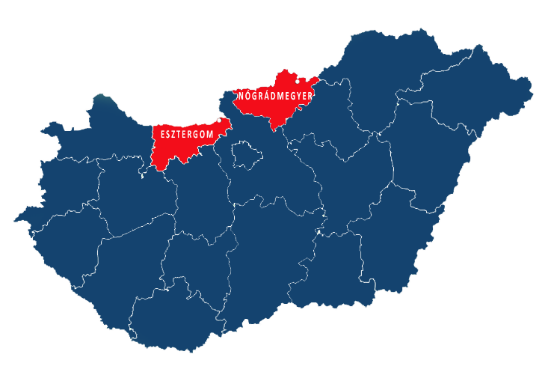
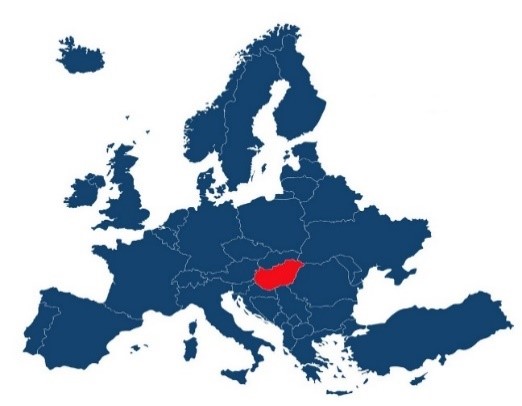
Figure 1. Location map of the monitoring stations in Hungary.
Instrumentation and analysis
Concentrations of criteria air pollutants, i.e. CO, SO2 , NO, NO2 , NOx and O3 were obtained from regular stations of the National Air Quality Network in Esztergom. In Nógrádmegyer these pollutants were measured directly at the sampling site, we obtained data from a mobile measuring station owned by the National Public Health Center. The PM 2,5 aerosol samples was collected onto quartz fiber filters (Ø 150 mm) by two Digitel DHA-80 high-volume aerosol sampler. The samplers were loaded with 14 filters, which were changed automatically every 24 hours at 6 PM. Volatile organic compounds (VOC) and carbonyls were collected by an active method using a low-flow module SKC pump for 60 min every day from 6 PM to 7 PM. For the sampling of gas-phase polycyclic aromatic hydrocarbons (PAH) used a polyurethane foam (PUF) sorbent by applying a low volume flow pump. The chemical composition of the PM 2.5 aerosol particle can be determined by various chemical analyzes (e.g. monosaccharide anhydride concentration after derivatization and PAH compounds by GC-MS, trace elements by ICP-MS, water-soluble ions by IC).
RESULTS
Atmospheric concentrations
Among the sampling sites, higher levels of PM 2.5 were observed at rural site during the whole study period (Fig. 2). At the rural site, 1,5-2-fold higher PM2,5 mass concentration was measured than at the urban site. The higher concentration is mainly explained by the fact that solid fuel combustion is the typical heating mode in Nógrádmegyer, which is one of the main sources of PM2.5 aerosol.
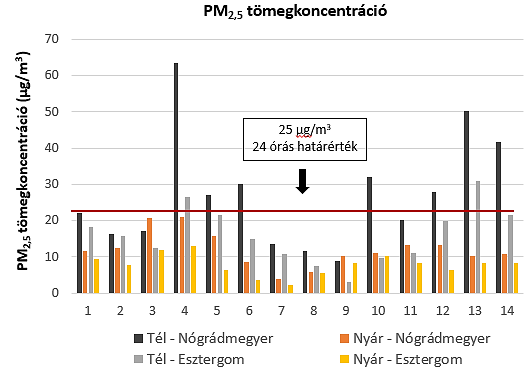
Figure 2.: PM2,5 mass concentration during the study period.
Levoglucosan and its isomers (mannosan and galactosan) are widely used in recent years as a biomass burning (e.g. wood) markers. The LEV mean concentration was larger at the rural site by a factor of 1.5 and MAN (1,1) and GAN (1,3) was bigger by approximately 20 % than in Esztergom (Fig 3.). Biomass burning is more common in the rural settlement, which explains the higher concentrations.
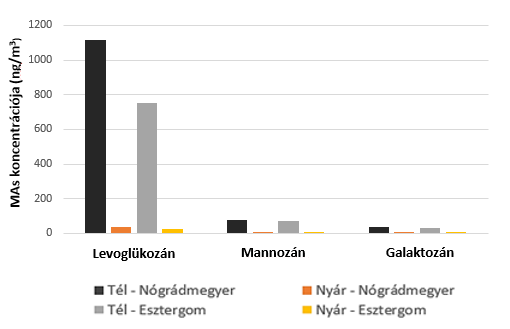
Figure 3.:Monosaccharid anhydrides concentration during the study period.
There is evidence that residential wood combustion is a significant source of airborne PAHs – especially benz(a)pyrene (BaP is mutagenic and highly carcinogenic) - at many locations. Results show that relatively high BaP concentrations were detected in PM2,5aerosol samples, especially in Nógrádmegyer (Fig 4.). At the rural site, the level exceeding limit value was measured for the BaP on each measurement day in the heating period. On measurement day 4, a concentration one order of magnitude higher than the health limit (13,2 ng/m 3 ) was measured. The high BaP concentration clearly indicate that the population is heating with wood.

Figure 4.: Benz(a)pyrene concentration during the heating period.
Questionnaire survey
In addition to monitoring the ambient air, I also used a questionnaire survey, and I received information about the living environment of a total of 100 households. I asked questions about the heating equipment and fuels and health-related data used in the Living Environment, Health questionnaire. The Human Biomonitoring Study questionnaire asks about foods consumed in the 24-hours prior to urine sampling.
Human biomonitoring study
Typical biomarker compounds for solid fuel combustion are determined from urine samples. 192 participants were selected for the study on a voluntary basis. The study population is children aged 6–11 years as well as one of the parents of the child. This makes it possible to examine whether there is a difference between the exposure of the parent and that of the child. Biomarkers are currently being analyzed.
CONCLUSIONS
It is clearly observed how concentration of air pollutants is significantly increased during the heating period, which contributes significantly to the deterioration of air quality in these sites. All this can be linked to residential solid fuel combustion in addition to local meteorological conditions and long-range transport processes. Finally, in national programs to improve air quality greater emphasis should be placed on domestic solid fuel combustion, as positive developments can be achieved through the modernization of domestic heating and combustion, in particular by educating the population.
REFERENCES
- Clark L M, Peel J.L, et al. Health and Household Air Pollution from Solid Fuel Use: The Need for Improved Exposure Assessment. Environ Heath Perspect 121 (2013) 1120–1128.
- Kim, K.-H., Jahan, S.A., Kabir, E., Brown, R.J.C., 2013. A review of airborne polycyclic aromatic hydrocarbons (PAHs) and their human health effects. Environment International 60, 71-80.
- Krugly, E., Martuzevicius, D., Puida, E., Buinevicius, K., Stasiulaitiene, I., Radziuniene, I. Minikauskas, A., Kliucininkas, L., 2014. Characterization of Gaseous- and Particle-Phase Emissions from the Combustion of Biomass-Residue-Derived Fuels in a Small Residential Boiler. Energy & Fuels 28, 5057-5066.
- Simoneit, B.R., 2002. Biomass burning — A review of organic tracers for smoke from incomplete combustion, Applied Geochemistry. doi:10.1016/S0883-2927(01)00061-0
- Smith, K. R. et al. Millions dead: how do we know and what does it mean? Methods used in the comparative risk assessment of household air pollution. Annu. Rev. Public Health 35, 185–206 (2014).
Balogh Boglárka Sára

